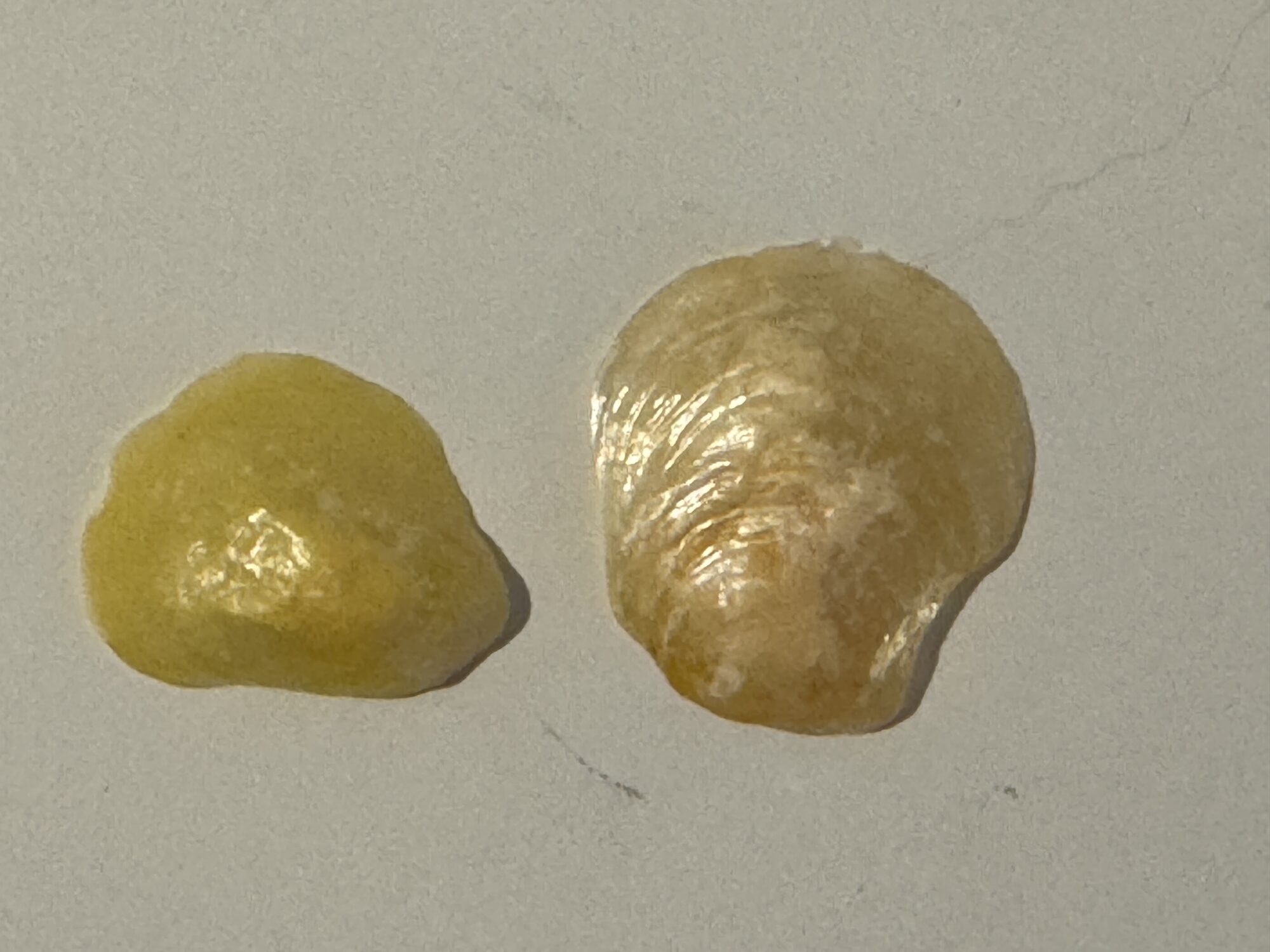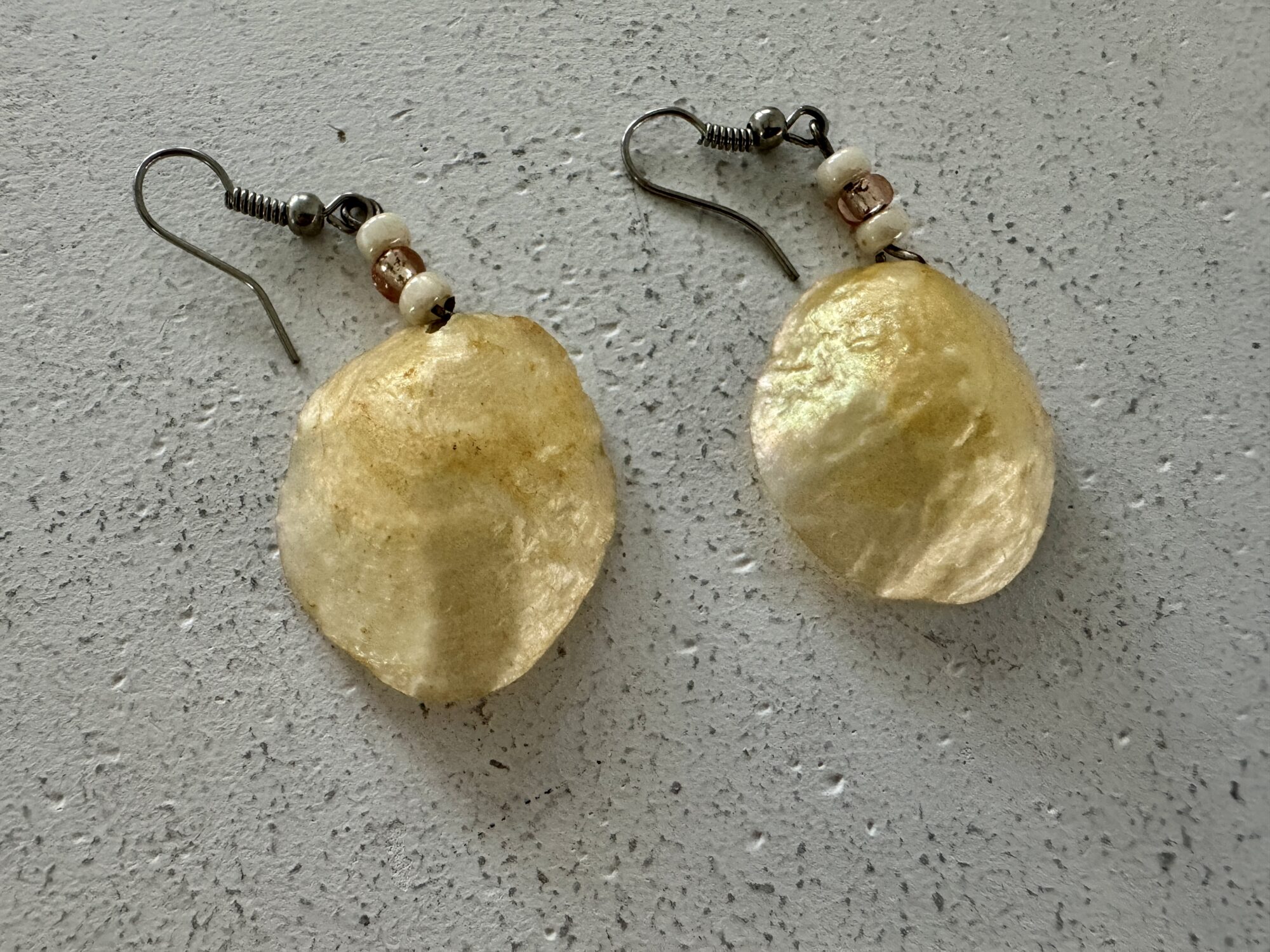
By Mary Reid Barrow
Jingle shells, jingle shells
Jingle all the way!
Oh, what fun it is to ride
On an oyster in the Bay!
Lynnhaven oyster shells were piling up by the dozens at LRNow’s volunteer appreciation party as volunteers slurped down the delicious bivalves.
The oysters were graciously donated and shucked by Chris Shellhammer, founder of the Lynnhaven Oyster Club. But at one point something on top of one of the shells took sway over the oyster inside.
“A pirate’s toenail!” said volunteer Nancy Lowe as she picked one of the pale, yellow shells off the top of an oyster shell.
“No!” I told my friend. “It’s a jingle shell. And I have jingle shell earrings to prove it!.”
But no one around could weigh in on the little shell’s name nor had many even thought about its existence at all.
The common little bivalve is known, for sure, as an Anomia simplex. It attaches to oyster shells and other hard surfaces all around the Bay area.
Anomia lives out its life on an oyster or other surface, much like the oyster itself also attaches to a hard surface. Also like the oyster, it is a filter feeder opening its shell to take in tiny organisms from the water.

Its pretty, almost translucent top shell is often used to make jewelry and that’s when it is called a jingle shell, for sure. My jingle shell earrings were made years ago by oyster scientist and teacher, Laurie Sorabella, who was once the executive director of LRNow.
Jingle shells are also strung into necklaces. When the strand shakes, the shells make a jingling sound, and that’s how it got its name, according to various sources on the internet.
Other internet sites also said the shells were sometimes called a mermaid’s toenail (because the mermaid left her toenails behind when she grew fins!) or saddle shells, perhaps because the top and bottom shells open to create the shape of a saddle.
But Google has nothing to say about the shell being a pirate’s toenail. Nancy Lowe is my only reference. Does anybody know?